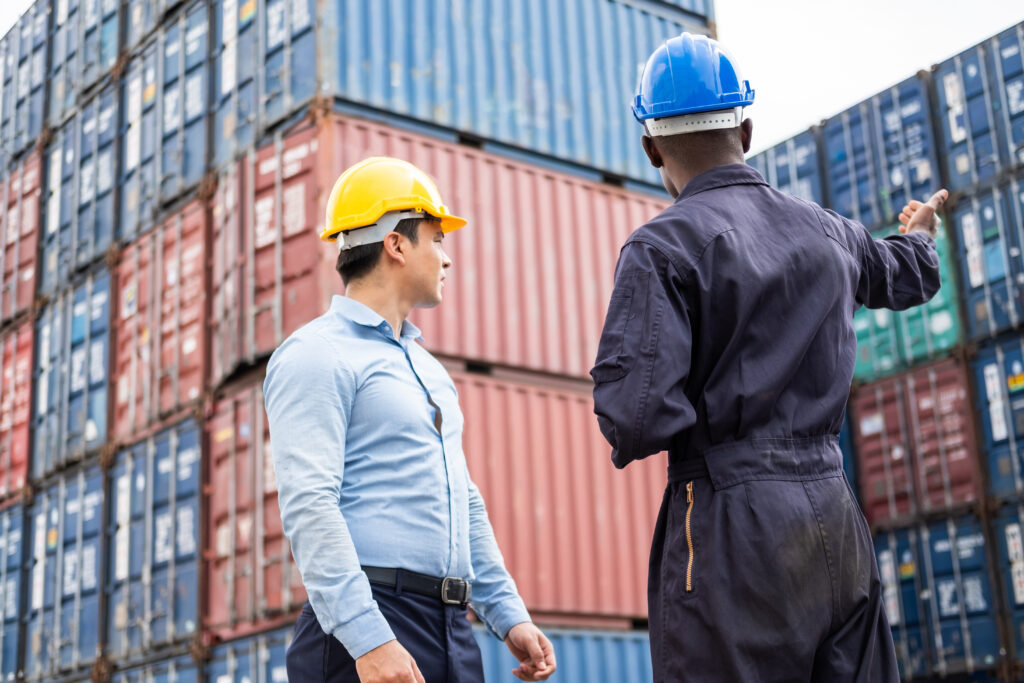A Guide to Inbound and Outbound Logistics Processes

What Are Inbound and Outbound Logistics?
The global logistics market is enormous. In fact, by 2027 it’s projected to amount to a whopping $11,367 million.
Especially given all of the current Logistics and Supply Chain Challenges we are currently facing, any company dealing with physical goods needs an inbound and outbound logistics process. That’s regardless of whether they manage it directly or not.
For the uninitiated, ‘inbound’ and ‘outbound’ are the terminologies used in logistics to mean ‘receiving’ or ‘sending/shipping.’
A sleek inbound and outbound process is necessary for a successful business. The two processes need to work in harmony for the smooth delivery of goods.
An inbound logistics process should enable businesses to restock their best-selling items in good time, introduce new items for sale, and process returns.
Whereas, outbound logistics should empower you to ship items to customers on time.
This article aims to guide you through the process of inbound and outbound logistics. Let’s get started!

What Is The Difference Between Inbound and Outbound Logistics?
Inbound and outbound logistics are the two most common stages used in the logistics process to move goods through the retail supply chain.
While both are needed for a smooth-running business, inbound logistics essentially deals with supply. In contrast, outbound logistics fulfill demand.
Inbound Logistics Definition
Inbound logistics refers to the receiving, storing, and transporting of goods into a business.
This can include moving raw materials, supplies, and finished goods from a distribution channel or manufacturer to a warehouse, retail store, or fulfillment center.
Outbound Logistics Definition
Outbound logistics refers to the shipping of finished products to customers from distribution centers or warehouses.
It’s the order fulfillment process and includes picking, packing, shipping, and delivering goods to their final destination.
Inbound and Outbound Logistics Processes
Inbound and Outbound logistics both focus on the transportation of goods- but one is being received by the company, and the other is being shipped by the company. So let’s go through these processes in more depth.
Inbound Logistical Processes
Some of the most common inbound logistics examples include:
- Purchasing materials
- Receipts and records
- Receiving
- Reverse logistics
Let’s take a look at each in turn:
Purchasing Materials
Inbound logistics can include sourcing or buying raw materials and products. Businesses should record the materials and products ordered. They should also have proper freight shipping tracking in place.
Receipts and Records
Receipts throughout the inbound logistics process can help ensure each step is completed and communicated accurately. Basic receipts include quantities, items, units, and measurements.
Keeping a record of the inbound process includes:
- Lot numbers
- Expiration dates
- Manufacturing dates
- P.O. tracking
- Serial numbers
- Inventory receipt statuses
- Emergency redirecting
- Default receipt status rules
- Availability of items for backorder
And more…
Receiving
The receiving team on the inbound logistics process is there to receive goods that arrive at the warehouse. They should accept, log and store the inventory in an allocated storage location.
Companies should have a good inventory tracking system to keep tabs on how much inventory is in the warehouse and how much new inventory has arrived. This allows for optimal operational efficiency in warehousing.
Reverse Logistics
Reverse logistics include processing customer exchanges and returns. These items should be examined and restocked into available inventory when they arrive at the warehouse.
You can create better supply chain efficiency cost-effectiveness by recycling and potentially refurbishing gently-used or unused products by having reverse logistics as part of your inbound logistics.
Outbound Logistics Processes
When the inbound logistic process is handled efficiently and correctly, the outbound logistics process will have a better chance of running smoothly. Below are some common outbound logistics examples.
Processing Orders
Once orders are received, they should be sent to a warehouse management system and put into a queue to be processed.
Orders should also be validated, checked for errors or duplications, and exceptions handled immediately.
Warehouse management systems should help you track:
- Shipping processes
- Inventory management
- Incoming and outgoing shipments
- Order picking and packing
- Putting shipments away
- Adding items to stock
- Receiving shipments
Customers should be able to add, change, or delete specific items or even entire orders until the items are loaded onto the outbound trailer. Real-time reporting and checking are crucial to the outbound logistics process.
Picking and Replenishment
Products need to be picked from the inventory and inventory replenished. Replenishment is essential for planning for future deliveries and making sure inventories are accurate.
It establishes pre-requisites and schedules logistics services and activities that need to be completed before the corresponding pick tasks.
By having the replenishment stage, companies can allow their supply chain to continuously operate with minimal manual planning between each step.
The picking process can be complex or simple, depending on the nature of the business and the goods being sold. Picking strategies may include:
- Zone picking
- Line picking
- Batch picking
- Label-based picking
- Cluster picking
- Paper-based picking
Now, let’s turn our attention to the next outbound logistics process:
Packing, Checking, and Loading
Packing is an important part of the logistics process. It can include:
- Inspecting
- Labeling
- Routing
- Fulfilling specific requirements for customers
If this step isn’t completed seamlessly, it could compromise:
- Shipping times
- Arrival times
- And even the company’s reputation
Once all shipments are ready, a warehouse coordinator should be updated automatically.
Shipping
Finally, goods need shipping out to customers. I.e., to their final destination. A log of this process needs to be kept for the company’s records. That way, they can track and prove that shipping has successfully taken place.
Are You Ready to Enhance Your Inbound and Outbound Logistics?
Having a seamless supply chain relies on efficient inbound and outbound logistics. The two processes go hand-in-hand. As receiving goods is essential for shipping them outbound to customers.
Therefore, investing in a reliable logistics process is worthwhile and recommended.
If you’re interested in finding a professional logistics provider that can meet your inbound and outbound supply chain needs, check out our logistics services.
Related Articles
General
Finding the Best Freight Forwarders Near Me

What Freight Forwarders Do GETTING SHIPMENTS ACROSS THE GLOBE Freight forwarding systems are logistics companies that help to get large shipments anywhere in the world. The right logistics company will provide freight forwarding to manage all the details of your shipment and coordinate with any specialized third party shipping services that you might need. Freight […]
Read MoreGeneral
Transform Your Supply Chain With Outsource Logistics

The Benefits of Logistics Outsourcing: The Importance of Logistics Operations in Business between Logistics Service Providers Do you have customers looking for services outside of your capabilities in your local market or for a service you do not currently support? At AmerTrans we understand how essential it is for your logistic operations to flow seamlessly. […]
Read More
